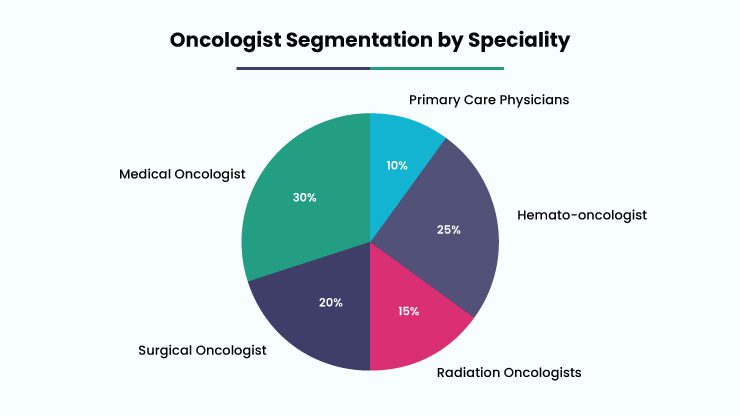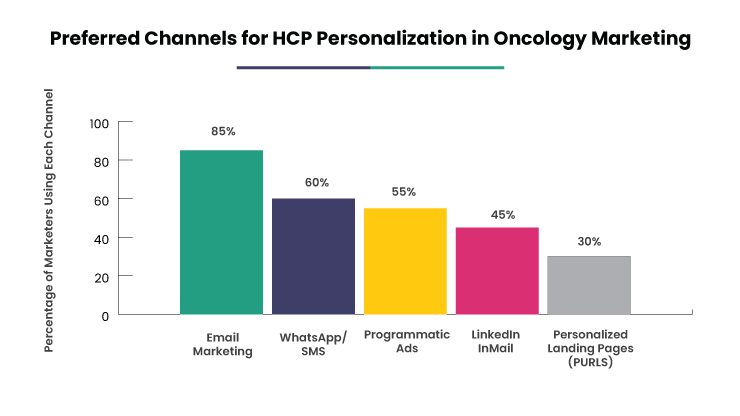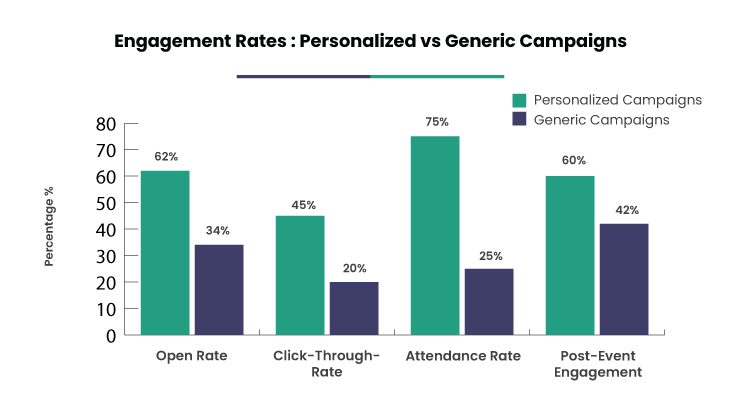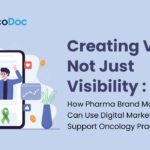Introduction: Beyond Mass Outreach
In today’s crowded digital space, oncologists and cancer institutions face a unique challenge: how to stand out and engage healthcare professionals meaningfully. Traditional one-size-fits-all outreach (emails, webinars, or display ads) often gets lost in the noise.
The solution? Personalized digital communication, tailored to the interests, specialties, and behaviors of healthcare professionals. Just as precision medicine targets the right therapy to the right cancer, precision marketing ensures your educational content, brand updates, and campaigns reach the right HCP at the right time via the right channel.
This article explores how oncology brands and marketers can ethically and effectively use personalized digital strategies to improve engagement with HCPs, especially those referring cases or influencing treatment protocols.
Why Personalized Communication Works for Oncologists and HCPs
Medical professionals are time-constrained and highly selective about the content they consume. Generic campaigns rarely convert. But personalization offers a sharper edge by:
- Increasing open and click-through rates in email campaigns.
- Enhancing webinar attendance by promoting only relevant topics.
- Improving brand recall for specific oncology therapies or services.
- Encouraging referral loyalty from physicians who feel understood and supported.
The return on investment includes higher-quality engagements, better educational impact, and a stronger brand reputation in the oncology ecosystem.
Key Pitfalls to Avoid in HCP Personalization
While personalization holds immense promise, oncology marketers often make these avoidable errors:
1. Hyper-Targeting Based on Incomplete Data
Segmenting by “oncologists interested in immunotherapy” without validating their actual practice area or prescribing patterns leads to mismatched messaging.
2. Repetitive Campaigns
Sending the same e-detailer or invite multiple times can create disengagement, especially when the content doesn’t evolve or reflect prior interactions.
3. Misusing CRM Tags
Using outdated or inaccurate CRM tags like “active prescriber” or “inactive GP” can skew targeting and damage trust with recipients.
4. Ignoring Local Practice Patterns
Campaigns that don’t reflect regional treatment guidelines or preferences (such as India’s biosimilar adoption or availability constraints) appear out of touch.
Best Practices for Personalizing Digital Campaigns for HCPs in Oncology
1. Segment by Specialty, Subspecialty and Content Preference
Go beyond generic “oncologist” labels. Segment your outreach into:
- Medical oncologists (chemotherapy focus)
- Surgical oncologists (procedure-centric content)
- Radiation oncologists
- Hemato-oncologists
- Primary care physicians who refer cancer cases
Match each segment with relevant resources like treatment algorithms, drug efficacy data, or guideline updates.

2. Behavioral-Based Targeting
Track user behavior (with consent) on digital assets:
- Did they attend your previous CME on head and neck cancer?
- Did they download a whitepaper on HER2-positive therapies?
- Did they visit your drug’s mechanism of action page?
Use this data to send follow-up invites or updates instead of pushing unrelated offerings.
3. Use Email Drip Campaigns with Logical Sequencing
Instead of blasting one-off emails, create a structured, personalized content journey:
- Email 1: “New NCCN guidelines update for NSCLC”
- Email 2 (3 days later): “Video: Expert panel on first-line options for EGFR-mutated NSCLC”
- Email 3 (1 week later): “Infographic: EGFR test turnaround times in India. What you should know”
Each message builds on the previous, reinforcing trust and recall.
4. Integrate Personalized Landing Pages (PURLs)
Personalized URLs (such as www.brandname.com/DrMehta) pre-load with the HCP’s name and specialty. This increases conversion rates and message relevance.
Include:
- Region-specific data
- Role-based calls to action (for example, “For Hemato-oncologists: Watch the MDS treatment update”)
Channels That Support Ethical HCP Personalization
Email Marketing with Dynamic Fields
Use tools like Mailchimp, HubSpot, or Veeva to personalize:
- Subject lines (“Dr. Sharma, new ASCO abstracts for GI cancers”)
- Content blocks (based on past interactions)
- Signature lines (with local MSL or rep contact)
Ensure compliance with email privacy regulations such as GDPR and India’s DPDP Act.
LinkedIn Sponsored Messaging
Craft personalized InMail campaigns targeting:
- Oncology KOLs
- Pharmacologists in teaching hospitals
- Medical directors in multispecialty centers
Use filters like “Job title contains Oncology” and personalize based on location and interests.
Programmatic Advertising (with Professional Context)
Deliver banner ads on medical platforms (such as Medscape India, BMJ India) based on user browsing history or recent activity. Ensure ads are:
- Non-intrusive
- Professionally framed (no direct drug claims)
- CTA-driven (for example, “Explore lung cancer CME updates”)
WhatsApp or SMS Nurture Campaigns
With opt-in, send crisp, tailored updates:
- “Hi Dr. Arora, join our 20-minute digest on myeloma trial updates.”
- “New e-book on biosimilars in oncology. Download now.”
Short-form and mobile-first approaches drive higher read rates.

Case Study: Personalizing CME Invitations for Higher Engagement
Company: Mid-size oncology pharma brand
Target: Medical oncologists in Tier 1 cities
Objective: Increase attendance in virtual CME on pancreatic cancer
Strategy:
- Used CRM data to identify HCPs who had interacted with pancreatic cancer content in the last 6 months
- Created two versions of invite: “New Therapy Options” (for recent graduates) and “Challenging Cases Panel” (for senior oncologists)
- Localized timing (evening sessions for South, early afternoon for North)
Results:
- 18% higher post-event engagement (resource downloads, follow-ups)
- 62% open rate (versus 34% industry average)
- 3x higher attendance than non-personalized blast campaign

Key Metrics to Track
Avoid vanity metrics. Focus on KPIs that reflect meaningful HCP engagement:
- Open rates and CTRs (by segment, not in aggregate)
- Conversion to action (CME registration, e-detailing signups)
- Content depth (average time on personalized resource pages)
- Revisit and retargeting response rates
- Referral source lift (for hospital marketers)
Conclusion: Make Precision Marketing the New Norm in Oncology
Personalization is not about gimmicks. It’s about relevance and respect. In a complex, high-stakes specialty like oncology, it’s how you demonstrate credibility, insight, and value to healthcare professionals.
By aligning digital content with the HCP’s role, behavior, and information needs, oncologists and healthcare marketers can build lasting professional relationships, improve educational impact, and strengthen brand positioning in an ethical, data-informed way.
The future of oncology communication isn’t louder. It’s smarter
The Oncodoc team is a group of passionate healthcare and marketing professionals dedicated to delivering accurate, engaging, and impactful content. With expertise across medical research, digital strategy, and clinical communication, the team focuses on empowering healthcare professionals and patients alike. Through evidence-based insights and innovative storytelling, Hidoc aims to bridge the gap between medicine and digital engagement, promoting wellness and informed decision-making.



